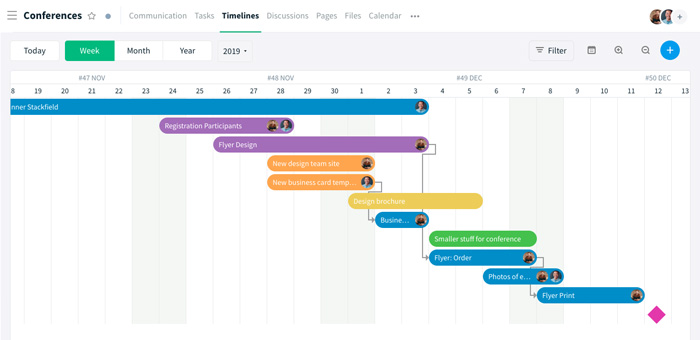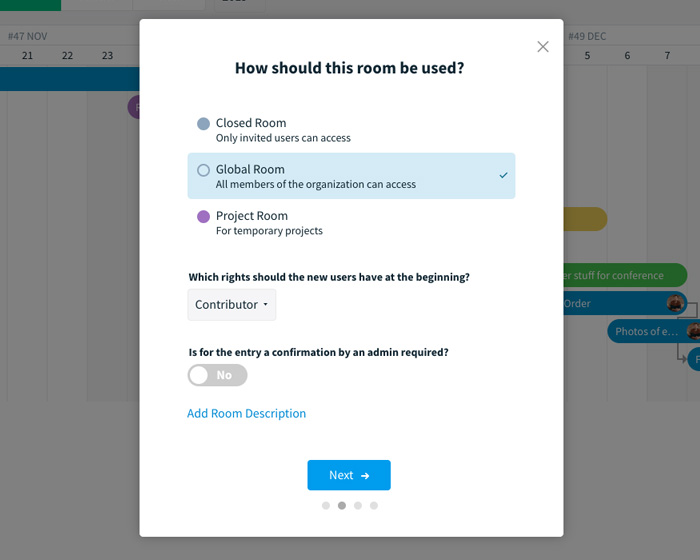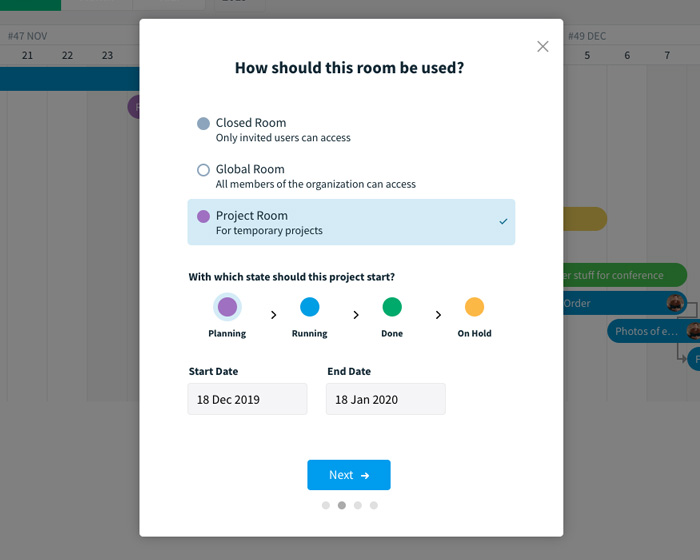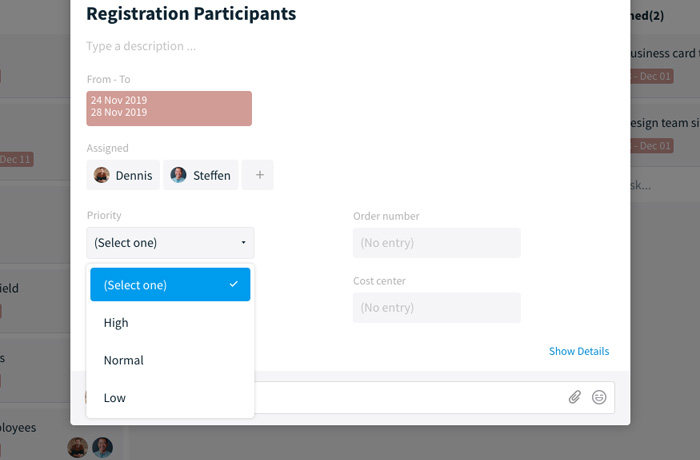Stackfield enters fourth generation and the update won't be long in coming!
Since Christmas and New Years Eve are just around the corner, we've decided to release Stackfield 4 after holiday season has ended. Today we can announce the official date: January 21, 2020 is the day! Here comes the first big sneak peek!
As soon as we have announced that Stackfield 4, being one of the biggest updates in the platform's history, is in the offing, we have received requests regarding its release and the new features in a daily manner. So far, we had to ask you for patience to receive more detailed information. This has now come to an end. Today, we take a first look at what's coming: A bunch of new functions and a more decent design - with even greater user-friendliness.
For all those who may be afraid of having to re-explore the platform from scratch or not being able to continue working as before. The time has come to give you the all-clear. Of course, the scope of Stackfield has expanded considerably. But Stackfield is and remains customizable, so new features like the ones we're showing today can be turned on and off as needed. We wanted to make Stackfield more beautiful and intuitive. By no means we want to make it complicated. As far as the design of the platform is concerned, we're dealing with a more modern pattern and some adjustments for the sake of clarity and comprehensibility. But now... enough talking about our new look!
Wanna know, what to expect? Three features that are part of Stackfield 4:
1. Timelines alias Gantt Charts

Let's get straight to the function that a large number of users have been waiting for for a long time: the Gantt charts, or Timelines (as we call them).
Henry Gantt developed them at the beginning of the 20th century and today - almost 100 years later - the charts are still very popular. They can be used to represent tasks under consideration of their dependence on other tasks. Dependencies can be defined in the chart simply by drag & drop or directly in the task. The duration of tasks can be extended, shortened or moved according to the same principle.
In addition, milestones can be used to mark important intermediate results and the completion of certain project phases.
2. Global Rooms and Project Rooms
Speaking of projects. From the beginning of next year there will be special project rooms for them. But not only that: You wished for public rooms and we’ll let your wish come true!
After the update you’ll be able to choose from the following room types:
Closed Rooms
These are the long-known rooms in Stackfield, to which members can be added explicitly after creating the room.
Global Rooms

As a counterpart to the closed rooms, we’ve added the option to create Global Rooms. These are public, i.e. accessible to all members of the organization. Members can join on their own without having to be added beforehand. You might want to use those rooms, for example, to make general guidelines or news available to everyone.
At this point, however, we would like to point out that you need to pay attention to what content is shared if using a public room. This applies in particular if the organization also works with guests and external members. However, to lower the risk, there will also be an option for the creator of the room to request a confirmation of participation by the room admin as soon as a member wants to join.
Project Rooms

On top of that, we there will be rooms specially designed for project work. These rooms include a project-specific planning overview that shows the progress of the project and all open, overdue and completed projects at a glance as well as fixed start and end dates and the respective project managers.
3. Custom Fields

Last but not least, we will look at features that allow us to design tasks even better in the future. If desired, so-called "custom fields" can be defined for selected rooms - e.g. for important intermediate appointments, the extension number of an important contact person or drop-down lists with priorities, team assignments, etc. These individual input fields will be added to all task cards of a room.
The following options are available:
- additional dates
- additional text fields
- checkboxes
- dropdown lists
- number fields
This was our first insight into the new Stackfield 4. We hope you like what you've seen so far and you're looking forward to the release of Stackfield 4 as much as we do. (- in January 2020!)
Almost finished...Please click the link in the email and confirm your email adress to complete the subscription process.
Never miss a post. Get awesome insights in your inbox.